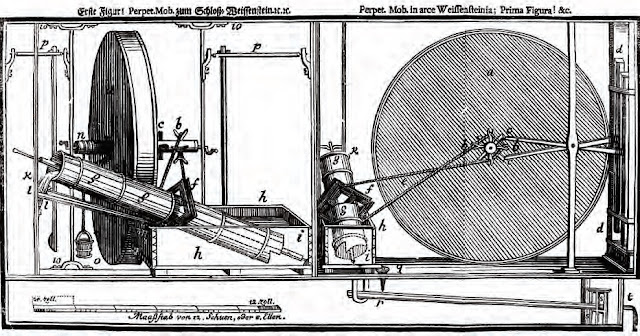SUCCESS THROUGH INTUITION AND EXPERIMENTATION IN 2016
Mathematics in our world is a vital tool for invention but Michael Faraday had no use for it, in fact he believed that the subject could actually be a hindrance to successful experimentation. He worked intuitively and experimented with new ideas until he had exhausted all possibilities.
I have little use for maths in my search for a solution to Bessler's wheel. I read with a glazed expression the discussions about varous forces and formulae and I continue with my experimentation. I leave aside simulation and animation, possibly because I am not au fait with much of it, but also for me it would be too easy to overlook something that only becomes apparent when you have the parts in your hands. Handling parts, moving them manually, altering the range of movement, moving and adjusting the positions and sizes of the weights - all of these things help to visualise the potential new configurations that would not be visible in simulations if only because all of these things have to be fed into the computer to see what happens.
I have little use for maths in my search for a solution to Bessler's wheel. I read with a glazed expression the discussions about varous forces and formulae and I continue with my experimentation. I leave aside simulation and animation, possibly because I am not au fait with much of it, but also for me it would be too easy to overlook something that only becomes apparent when you have the parts in your hands. Handling parts, moving them manually, altering the range of movement, moving and adjusting the positions and sizes of the weights - all of these things help to visualise the potential new configurations that would not be visible in simulations if only because all of these things have to be fed into the computer to see what happens.
That is why I ignore statements which deride our efforts here. It has always seemed to me that gravity holds the answer to Bessler's wheel, but I learned long ago that I was not supposed to regard gravity as an energy source and I always try to maintain that stance in public, but actually I still think of it as an energy source and that gives me an advantage over all those people who persist in looking for another energy source.
Bessler clearly (in my opinion) took the same view and that is why he succeeded where everyone else failed. I know that in 2016 the solution to Bessler's wheel will be published.
And here's another thing - people have questioned whether planet earth completely covered in gravity-driven wheels would have some detrimental effect on us, the earth or some other facet of our lives. To me the answer is simple; no it won't have any detectable effect.
Gravity is basically a non-contact force so any collisions resulting from its attraction are secondary, it has simply been the vehicle in which mass rides. In a car crash we don't blame the car engine for driving us at speed into a wall and causing terrible damage. The resultant damage is simply the effect of stopping suddenly. If we hadn't hit a wall, the work being done by the speeding engine would have continued onwards as before. So when a weight falls, regardless of whether we use the fall to raise another weight or rotate the wheel a little, gravity does its thing in making the weight fall and then continues on its merry way looking for something else to make fall.
Bessler’s wheel was driven by the reaction of falling weights to the force of gravity. No-one can argue that the energy is not free to us even if at some nano level it is paid for throughout the universe. I'm satisfied that nothing we do on earth here using gravity as our energy source can effect anywhere in the universe by any detectable means over any period of time you care to consider.
So onwards with enthusiasm, optimism and hope!
So onwards with enthusiasm, optimism and hope!
JC













